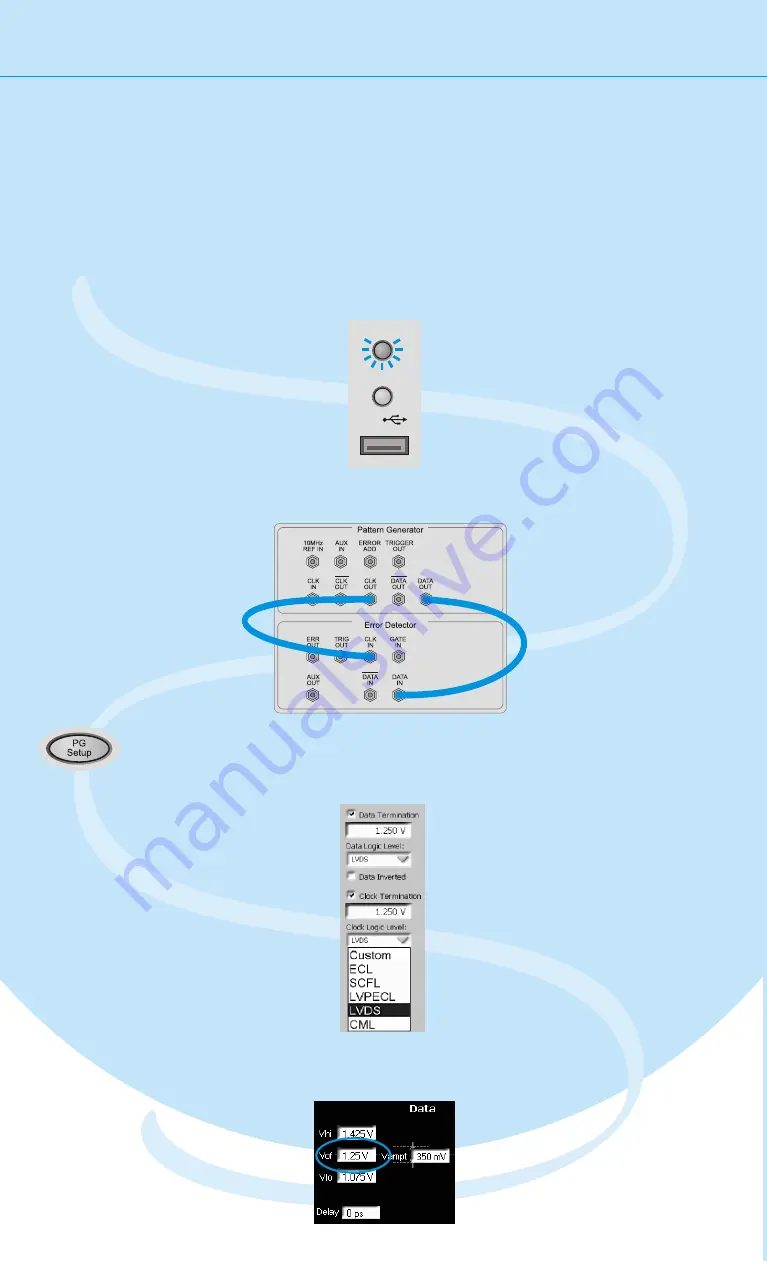
Preparing the Test
6
What Are We Testing?
The quickest way to familiarize yourself with the instrument is to set up a
short test. You can test the BER on a cable. All you need for this test is an
APC/RPC cable for the data port connection and an APC/RPC-SMA adapter
cable to connect the PG clock output to the ED clock input.
Setting up the Pattern Generator
First we need to set up the pattern generator.
To keep things simple, let's set up LVDS logic
levels for both the data and clock output.
Reset the instrument.
This sets all voltages
and parameters to
default values.
Now select the logic
family LVDS for the data
and clock port.
Check the values to
make sure you can’t
damage your device.
You can change the output
signal parameters according
to the needs of your device.
Let's increase the
signal's data offset
by 100 mV. Just tip
the offset field,
and turn the fine-tuning
knob until you have the
desired value.
1
The pattern generator's
output ports are always active.
Therefore, you must be sure that
your device can handle these
ranges before you connect it.
4
5
6
USB
Local
Preset
Switch to the
PG Setup.
3
Connect the DUT
In our case you just have to
connect the following ports:
PG Clock Out
PG Data Out
ED Data In
ED Clock In
2
All pattern generator
output ports that are not
connected must be
terminated with 50 Ohm.






























